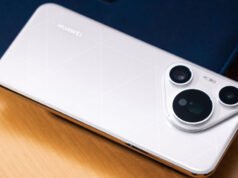As anticipation builds for the launch of the Huawei Nova 13 series on October 22, a new leak has surfaced regarding the Huawei Nova 13 Pro. The information comes from a Geekbench listing, shared by tipster Digital Chat Station, which provides insight into the phone’s performance and key specifications. Unfortunately, the results are underwhelming, especially compared to its predecessor, the Nova 12 Pro.
Lower Geekbench Scores Raise Concerns
The Geekbench listing reveals that the Huawei Nova 13 Pro achieved scores of 997 in the single-core test and 2,900 in the multi-core test. These results are significantly lower than those of the Nova 12 Pro, which scored over 1,300 in the single-core and 4,100 in the multi-core tests. This substantial drop in performance has raised concerns among potential buyers and tech enthusiasts, especially considering that the Nova 13 Pro is being marketed as a successor to the Nova 12 Pro.

Powered by Kirin 8000 Chipset
One of the main reasons for the underperformance of the Nova 13 Pro could be its use of the Kirin 8000 chipset. According to the tipster, this mid-range processor is powering the new device, marking a noticeable downgrade from the Kirin 9000s used in the Nova 12 Pro. The Kirin 9000s is also found in Huawei’s flagship Mate 60 series, providing a much higher level of performance compared to the Kirin 8000.
The Kirin 8000 features a single Cortex-A77 core clocked at 2.40 GHz, three additional Cortex-A77 cores running at 2.19 GHz, and four energy-efficient Cortex-A55 cores at 1.84 GHz. While these specifications are decent for a mid-range processor, they fall short when compared to the more advanced Kirin 9000s, which features a better architecture and higher clock speeds, contributing to superior performance.

Performance Tuning and Optimization
Interestingly, despite the Nova 13 Pro using the same Kirin 8000 chip as the Huawei Nova Flip, which was launched in August 2024, the Geekbench scores are still lower. This could be due to Huawei experimenting with performance tuning on the Nova 13 Pro to strike a balance between performance and battery life. While the company may be aiming for better energy efficiency, this approach has resulted in lower benchmark scores, which might not appeal to users expecting high performance from the Pro model.
Memory and Display Specifications
The Geekbench listing also confirms that the Nova 13 Pro will come with 12GB of RAM, which should help with multitasking and overall performance. However, the phone’s display remains largely unchanged from its predecessor. The device is expected to feature a 1.5K quad-curved display, although the exact size has not yet been revealed. This resolution matches that of the Nova 12 Pro, meaning users can expect sharp visuals and immersive viewing experiences, despite the downgrade in processing power.

HarmonyOS and Software
On the software side, the Huawei Nova 13 Pro is expected to run HarmonyOS 4.2, Huawei’s proprietary operating system. While there has been speculation that the company’s new HarmonyOS Next could debut with the Nova 13 series, the latest leaks suggest that the new OS will likely launch at a later date. HarmonyOS has been a key focus for Huawei as it moves away from Android, and the 4.2 version is expected to bring incremental updates and improvements in terms of functionality and user experience.
Camera System and Features
One area where the Nova 13 Pro is expected to excel is its camera system. The device is rumored to feature a dual-camera setup on the front, with 60MP and 8MP sensors, which should deliver excellent selfie and video calling experiences. On the back, the phone is expected to sport a triple-camera setup. The primary camera is a 50MP sensor with a variable aperture, allowing for better control over depth of field and low-light photography.
In addition to the main camera, the rear setup is rumored to include a 12MP ultrawide sensor for capturing expansive landscapes and a telephoto lens with 8MP resolution. This combination of cameras should offer a versatile photography experience, making the Nova 13 Pro a compelling choice for users who prioritize camera performance.
Battery and Charging
The Huawei Nova 13 Pro is also expected to come with support for 100W fast charging, which will allow users to charge their device quickly and efficiently. This feature has become increasingly important as smartphone users demand faster charging times to minimize downtime. Moreover, the Nova 13 Pro may include satellite connectivity, a feature that has gained popularity for providing emergency communication capabilities in areas where cellular networks are unavailable.
Final Thoughts
While the Huawei Nova 13 Pro offers several appealing features, including a versatile camera system, a high-quality display, and fast charging capabilities, its underwhelming performance on Geekbench is a cause for concern. The downgrade to the Kirin 8000 chipset from the more powerful Kirin 9000s used in its predecessor is likely the main factor behind the lower scores. This may be disappointing for users expecting flagship-level performance from the Pro model.
Despite the lower benchmark scores, Huawei may be focusing on optimizing the Nova 13 Pro for a balance between performance and battery life, which could appeal to users who prioritize efficiency over raw power. However, for those seeking a more powerful device, the underperformance may be a dealbreaker. As the launch date approaches, it will be interesting to see how Huawei positions the Nova 13 Pro in the market and whether the final product meets the expectations of its user base.






